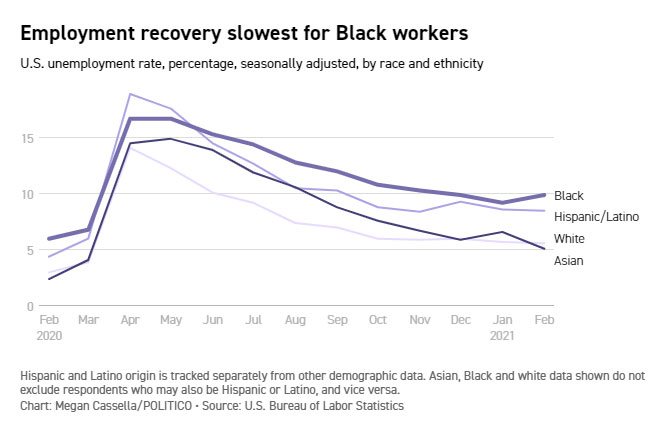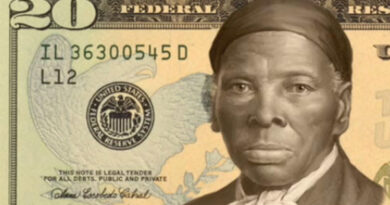Black Workers, Hammered by Pandemic, Now Being Left Behind in Recovery
Structural inequities in the U.S. labor market that have affected Black and Hispanic workers’ ability to advance out of low-paying jobs, as well as discrimination in hiring practices, are also likely having an effect.
Black Americans, who were among the hardest hit by coronavirus layoffs, are now recovering at the slowest rate, a one-two punch that threatens to worsen the United States’ already stark wealth and income disparities long after the pandemic recedes.While Hispanic workers initially saw the sharpest uptick in unemployment when business shutdowns began last spring, Black people have seen a slower return to work even as the economy is poised for a robust rebound, government data and economic analyses show. When the overall unemployment rate ticked down in February, Black workers were the only group that saw a rise in joblessness, a 0.7 percentage point increase.
The share of Black Americans holding jobs also dropped over the month while it continued to move up for all other races and ethnicities. Over the past year, white, Asian and Hispanic Americans have regained roughly two-thirds of their initial job losses in terms of what share of their population is working, a key measure of labor and unemployment known as the “employment-population ratio.” Black workers have only recovered slightly more than half.
The data has fueled fears that the nascent recovery will not be evenly shared, a dynamic that would exacerbate income and wealth inequality while prolonging the return to full employment. The trend is reminiscent of the Great Recession, when Black workers saw a worse downturn and slower rate of return to normal. And this time, it has caught the attention of top policymakers across the Biden administration and in Congress.
“We’re trying to make sure that it is not like so many other recoveries,” said House Majority Whip Jim Clyburn (D-S.C.), the most senior Black lawmaker in Congress and chair of the Select Subcommittee on the Coronavirus Crisis. “Slow for everybody, and a snail’s pace for Black and brown communities.”
The headwinds that Black workers face are plenty, some unique to the coronavirus recession but others the result of structural inequities that have long contributed to high rates of unemployment — typically double that of white workers even in strong economies.

| For one, many of the industries in which Black workers are heavily represented are not recovering as quickly as others as the economy reopens — or are even continuing to backslide. State and local governments have long been a major employer for African Americans. But while the labor market broadly improved last month, state and local governments shed another 83,000 jobs and remain down 1.4 million workers from a year ago. |


